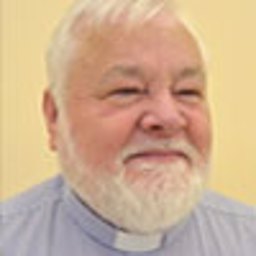On January 20, the world heard Amanda Gorman speak at the Inauguration of President Biden and Vice–President Harris. She stole the show as she spoke words of hope and power.
This 22–year–old black woman from Los Angeles is the youngest inaugural poet laureate in history. She follows in the footsteps of other poets such as Robert Frost and Maya Angelou.
Along with countless others, I was transfixed. Later that evening, CNN reporter Anderson Cooper was gob–smacked as he interviewed this remarkable and strong young woman. She had been working on the poem since December; when the insurrection of January 6 happened, she refused to let those horrific events derail her. She wove that terrible day into her poem for this bright day, to help her “write a message of hope and healing and unity for the nation. To me, words matter. I tried to reclaim poetry to repurify, resanctify, not only the Capitol building which we saw violated, but also the power of words.”
And she did. She embodied a powerful hope in a dark time. This is what hope looks like. Why do I say that?
Hope begins with truth–telling. Hope is not about looking beyond the ugliness in life, that the future will somehow be better. That kind of optimism is based in a denial of reality.
This powerful hope begins with telling the truth about what happened, about what is happening, about the danger and fear of the moment. Sometimes it sounds like lament. Amanda Gorman told the truth and refused to give in to despair. She is honest about the chaos, but will not be victimized by it. She testifies powerfully about what is wrong and then holds a light to the future. “When day comes, we ask ourselves, where can we find light in this never-ending shade? The loss we carry. A sea we must wade. We braved the belly of the beast. We’ve learned that quiet isn’t always peace, and the norms and notions of what ‘just is’ isn’t always justice. And yet the dawn is ours before we knew it.”
She expressed a startling insight into what is happening. Dressed in bold, bright colours, she began to perform a liturgy of hope. Her words danced in the air as her fingers traced their meaning.
She spoke truth. Then she took the next step. She forged a way through the pain so she could point to what unites us. To quote Abraham Lincoln, she appealed to “the better angels of our nature.”
“We are striving to forge our union with purpose. To compose a country committed to all cultures, colours, characters and conditions of man. And so we lift our gaze, not to what stands between us, but what stands before us. We close the divide because we know to put our future first, we must first put our differences aside. We lay down our arms so we can reach out our arms to one another. We seek harm to none and harmony for all.”
She appeals to the ideal of unity in diversity. We move into the future, working together for the welfare of all. We don’t ignore what we’ve just gone through. We seek to improve. We seek to do better. We seek to be better.
She closes with a call to action.
“We will rise … We will rebuild, reconcile, and recover. And from every known nook of our nation and every corner called our country, our people diverse and beautiful, will emerge battered and beautiful. When day comes, we step out of the shade of flame and unafraid. The new dawn balloons as we free it. For there is always light, if only we’re brave enough to see it. If only we’re brave enough to be it.”
She knows the truth that if we are to find hope in any situation, we must be that hope. We must be the light, “if only we’re brave enough to see it, if only we’re brave enough to be it.”
This is what hope looks like. We tell the truth. We seek a way through the pain. We heed the call to be the change our world needs.
We move into Lent as a people of hope. We testify with power and grace to a love which does not let us go.

